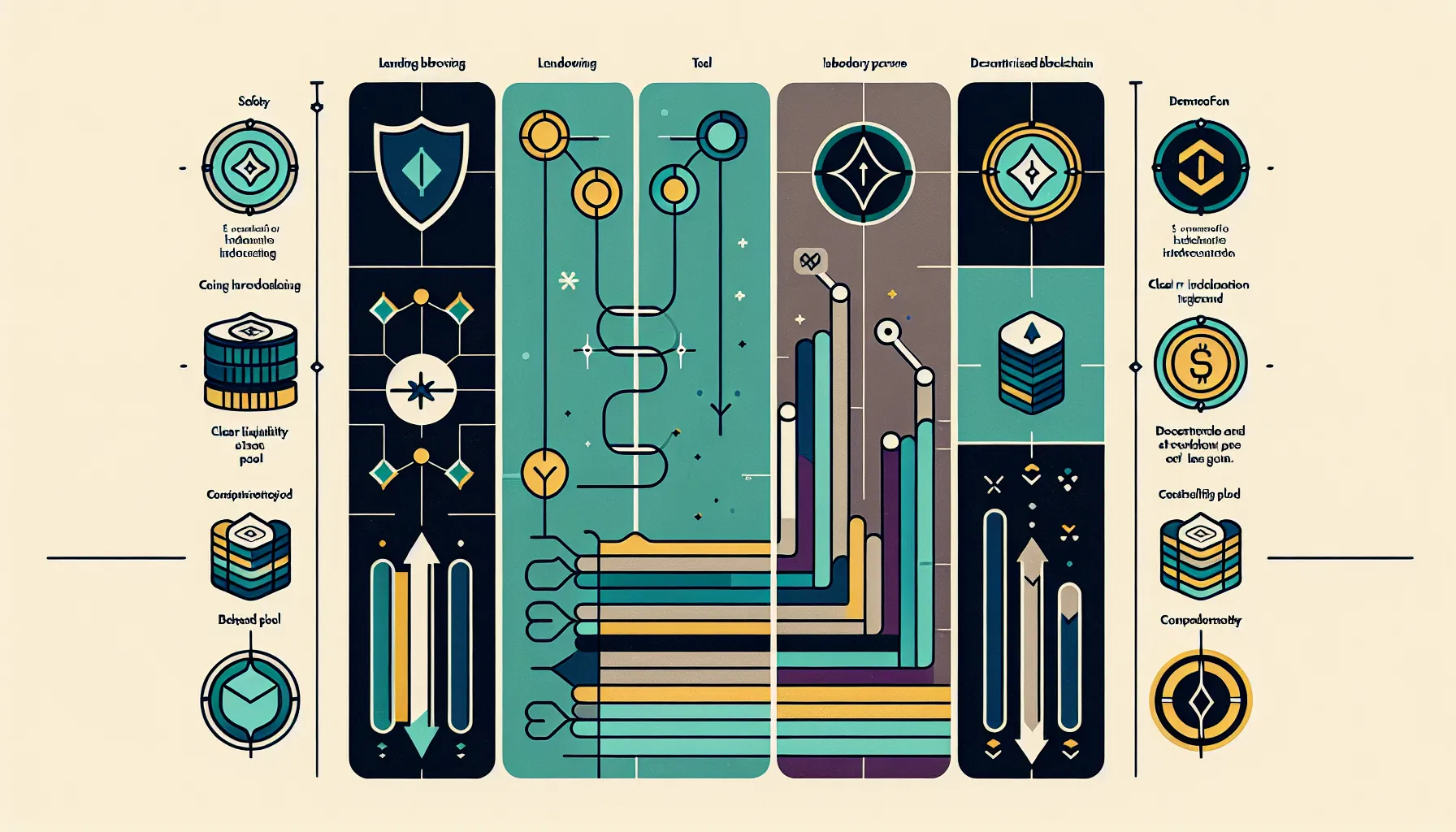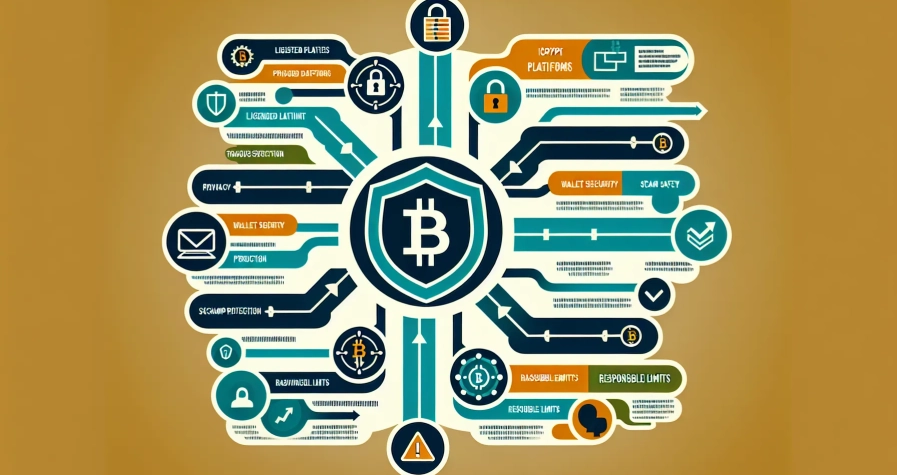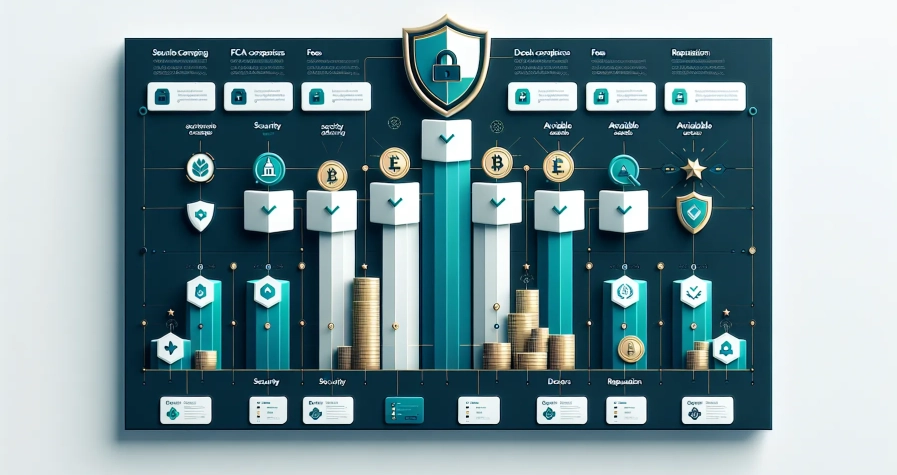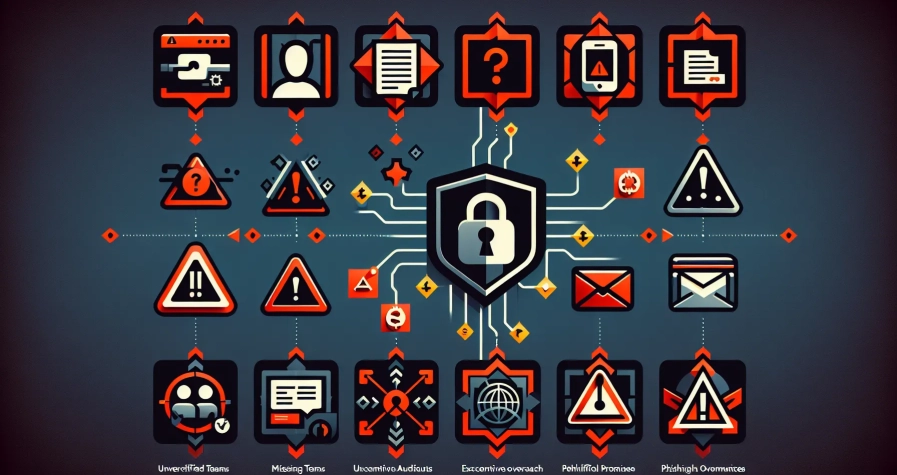Decentralised finance has revolutionised how people interact with money, removing intermediaries and offering unprecedented control over one’s financial assets. Yet for beginners, the DeFi landscape can feel overwhelming, filled with unfamiliar terminology, complex protocols, and tales of substantial losses. The good news? Not all DeFi platforms are created equal, and several have earned reputations for being accessible, intuitive, and relatively low-risk for newcomers.
Choosing the right platform matters immensely. A beginner-friendly DeFi protocol should offer clear interfaces, robust security measures, and straightforward functionality without sacrificing the core benefits that make decentralised finance attractive. This guide explores the best DeFi platforms for those taking their first steps into this space, focusing on options that balance innovation with prudence. Whether someone’s looking to earn interest on their crypto holdings, swap tokens efficiently, or explore lending protocols, there are platforms designed with newcomers in mind, and understanding which ones to trust can make all the difference.
Key Takeaways
- Best DeFi platforms for beginners include Aave, Curve Finance, Compound, and Uniswap, all offering intuitive interfaces and established security records.
- Beginner-friendly DeFi protocols prioritise interface simplicity, transparent documentation, and robust security measures including multiple audits.
- Low-risk options like Curve Finance specialise in stablecoin swaps, minimising volatility exposure and reducing impermanent loss for newcomers.
- Smart contract vulnerabilities and impermanent loss remain key risks even on established platforms, making it essential to start small and never invest more than you can afford to lose.
- Essential safety practices include using hardware wallets, verifying contract addresses, limiting token approvals, and diversifying across multiple platforms to reduce concentration risk.
What Makes a DeFi Platform Beginner-Friendly?

Before diving into specific platforms, it’s worth understanding what separates beginner-friendly DeFi protocols from their more complex counterparts. Several key characteristics define platforms that newcomers can navigate with confidence.
Interface simplicity stands at the forefront. The best beginner platforms feature clean, intuitive dashboards that don’t require users to decipher endless menus or technical jargon. When someone can understand what they’re doing within minutes of connecting their wallet, that’s a strong indicator of thoughtful design.
Established track records matter enormously in DeFi. Platforms that have operated for years without major security incidents demonstrate reliability that newer protocols simply can’t claim. Longevity isn’t everything, but it provides reassurance that a platform has weathered various market conditions and potential threats.
Transparent documentation separates quality platforms from the rest. Beginners benefit from clear explanations of how protocols work, what risks exist, and what fees apply. The best platforms don’t hide complexity, they explain it in accessible language.
Lower complexity products offer another crucial advantage. Straightforward lending, borrowing, or swapping functions provide easier entry points than advanced yield farming strategies or multi-step liquidity provision. Beginners should look for platforms where the core value proposition is immediately apparent.
Finally, robust security measures including audits from reputable firms, bug bounty programmes, and transparent governance models all contribute to a platform’s beginner-friendliness. When a protocol takes security seriously enough to invest heavily in it, newcomers can approach it with greater confidence. These characteristics collectively create environments where beginners can learn DeFi fundamentals without unnecessary risk or confusion.
Top Low-Risk DeFi Platforms for Newcomers
Several DeFi platforms have distinguished themselves as particularly suitable for beginners, combining ease of use with relatively conservative risk profiles. Each offers unique advantages whilst maintaining the accessibility that newcomers require.
Aave: Reliable Lending and Borrowing
Aave has established itself as one of DeFi’s most trusted lending protocols, with billions in total value locked and a track record spanning several years. The platform allows users to deposit crypto assets and earn interest, or borrow against their holdings, both fundamental DeFi activities that beginners should understand.
What makes Aave particularly beginner-friendly is its straightforward interface and comprehensive risk parameters. Users can see exactly what interest rates they’ll earn on deposits or pay on loans, with rates adjusting dynamically based on supply and demand. The platform supports major cryptocurrencies including stablecoins, which offer lower volatility for those preferring conservative approaches.
Aave’s safety module and multiple security audits provide additional reassurance. The protocol has implemented various risk mitigation features, including liquidation mechanisms that protect lenders and collateralisation requirements that reduce default risk. For beginners wanting to earn passive income on crypto holdings without complex strategies, Aave’s lending pools offer an accessible entry point.
Curve Finance: Stable Asset Swaps
Curve Finance specialises in stablecoin swaps and low-volatility asset pairs, making it an excellent choice for risk-averse beginners. Unlike platforms that help swaps between highly volatile cryptocurrencies, Curve focuses on assets designed to maintain stable values, such as various USD-pegged stablecoins or different versions of wrapped Bitcoin.
This specialisation offers two key advantages for newcomers. First, swapping between stable assets minimises exposure to price volatility during transactions. Second, providing liquidity to Curve’s pools typically involves lower impermanent loss risk compared to volatile asset pairs, a concept explored further below.
Curve’s interface, whilst initially appearing technical, actually simplifies the decision-making process by focusing users on a narrower range of options. The platform’s proven smart contracts and extensive audit history add to its appeal for those prioritising security. Beginners interested in liquidity provision often find Curve a sensible starting point due to these risk-reducing characteristics.
Compound: Straightforward Interest Earning
Compound pioneered the lending pool model that many DeFi protocols now follow, and it remains one of the most straightforward platforms for earning interest on crypto deposits. Users simply supply assets to Compound’s pools and begin earning interest immediately, no complex staking mechanisms or lock-up periods required.
The platform’s transparency stands out as particularly beginner-friendly. Interest rates are clearly displayed and update in real-time based on market conditions. Compound supports a carefully curated selection of assets, all of which have undergone rigorous evaluation, reducing the risk that beginners might inadvertently deposit questionable tokens.
Compound’s governance token, COMP, is distributed to users of the protocol, providing an additional incentive layer. But, beginners can completely ignore this aspect and simply use Compound for its core lending and borrowing functionality. This flexibility, offering both simplicity and optional complexity, makes Compound ideal for those who want to grow with a platform as their DeFi knowledge expands.
Uniswap: User-Friendly Token Swapping
Uniswap revolutionised decentralised exchanges with its automated market maker model, and it remains the most popular DEX for good reason. The platform’s interface is remarkably intuitive, users select two tokens, enter an amount, and execute the swap with just a few clicks.
For beginners, Uniswap offers several advantages. The platform supports an enormous range of tokens, providing access to virtually any ERC-20 asset. Its liquidity depth means that swaps typically execute with reasonable slippage, particularly for popular trading pairs. And the straightforward interface removes barriers that might intimidate newcomers to decentralised exchanges.
But, beginners should approach Uniswap with appropriate caution. The platform’s permissionless nature means anyone can list tokens, including fraudulent ones. Sticking to well-known assets and double-checking token contract addresses before swapping provides essential protection. Used wisely, Uniswap serves as an excellent introduction to decentralised trading without the complexity of order books or limit orders.
Understanding Risk Factors in DeFi
Even the most beginner-friendly platforms carry inherent risks that users must understand before committing funds. DeFi’s decentralised nature creates both opportunities and vulnerabilities that differ significantly from traditional finance.
Smart Contract Vulnerabilities
Smart contracts, the self-executing code that powers DeFi protocols, represent both the technology’s greatest strength and a potential weakness. These contracts eliminate middlemen and enforce rules automatically, but they’re only as secure as their code. Bugs, logical errors, or unforeseen interactions can create vulnerabilities that malicious actors might exploit.
High-profile hacks have demonstrated this risk repeatedly. Even audited contracts occasionally contain flaws that remain undiscovered until exploited. For beginners, this means several precautions are essential: prioritising platforms with multiple audits from reputable firms, favouring protocols with long operational histories, and never investing more than one can afford to lose.
The good news is that established platforms like those discussed above have undergone extensive security reviews and operated without major incidents for extended periods. This track record doesn’t guarantee future safety, but it significantly reduces risk compared to newer, unproven protocols.
Impermanent Loss and Liquidity Risks
Impermanent loss represents one of DeFi’s more counterintuitive risks, affecting users who provide liquidity to decentralised exchanges. When someone supplies two tokens to a liquidity pool, they’re exposed to price changes between those assets. If the relative prices diverge significantly, the liquidity provider might end up with less value than if they’d simply held the tokens separately.
This phenomenon is called “impermanent” because the loss only becomes permanent when liquidity is withdrawn. If prices return to their original ratio, the loss disappears. But, in volatile markets, impermanent loss can substantially erode returns, even when trading fees generate positive yields.
Beginners can mitigate this risk by focusing on stable asset pairs (like those on Curve) or by avoiding liquidity provision altogether until they thoroughly understand the mechanics. Simple lending through platforms like Aave or Compound doesn’t expose users to impermanent loss, making these activities more suitable for cautious newcomers.
Liquidity risks extend beyond impermanent loss. Some smaller tokens or pools might have insufficient liquidity, making it difficult to exit positions at desired prices. Sticking to major platforms and well-established pools helps beginners avoid these situations whilst they’re still learning DeFi’s intricacies.
Essential Safety Practices for DeFi Beginners
Navigating DeFi safely requires adopting security practices that might seem excessive to those accustomed to traditional finance, but these precautions are absolutely essential in decentralised environments where transactions can’t be reversed and support teams can’t recover lost funds.
Wallet security forms the foundation of DeFi safety. Hardware wallets like Ledger or Trezor provide the strongest protection for significant holdings, keeping private keys offline and away from potential malware. For beginners just starting with smaller amounts, reputable software wallets like MetaMask offer reasonable security, provided users never share their seed phrases and remain vigilant about phishing attempts.
Starting small can’t be emphasised enough. DeFi’s learning curve is steep, and mistakes happen. By beginning with amounts one’s comfortable losing entirely, beginners can gain practical experience without catastrophic consequences. Many have learned expensive lessons about gas fees, slippage, or contract approvals by jumping in with substantial sums before understanding the fundamentals.
Verifying contract addresses protects against one of DeFi’s most common scams. Fraudulent tokens and phishing sites often impersonate legitimate protocols, tricking users into approving malicious contracts. Always access platforms through official websites (bookmarked for safety), and double-check token contract addresses against official sources before interacting with them.
Understanding approvals represents another crucial practice. When using DeFi platforms, users typically must approve contracts to spend their tokens. Some interfaces request unlimited approvals for convenience, but this creates ongoing risk if a contract is later compromised. Setting specific approval amounts or using tools that limit permissions adds protective layers.
Diversifying across platforms reduces concentration risk. Rather than placing all funds in a single protocol, no matter how reputable, spreading deposits across several established platforms limits potential losses from any single security incident. This strategy mirrors traditional investment wisdom adapted for DeFi’s unique risk profile.
Finally, staying informed about the platforms one uses pays dividends. Following official channels, understanding how protocols respond to issues, and keeping aware of broader DeFi security trends helps users spot potential problems early. The most security-conscious DeFi participants treat ongoing education as essential rather than optional.
How to Get Started with Your First DeFi Platform
Taking the first practical steps into DeFi needn’t be intimidating when approached methodically. A structured process helps beginners navigate technical requirements whilst minimising early mistakes.
Step one involves setting up a compatible wallet. MetaMask remains the most popular choice for Ethereum-based DeFi, offering browser extensions and mobile apps that connect seamlessly with most platforms. During setup, users receive a seed phrase, typically twelve or twenty-four words, that must be recorded accurately and stored securely. This phrase represents complete control over the wallet, so treating it with appropriate seriousness is non-negotiable.
Funding the wallet comes next. Beginners can purchase crypto directly through some wallet interfaces, or transfer funds from centralised exchanges like Coinbase or Kraken. Starting with a modest amount allows for learning without excessive risk. It’s also essential to keep some ETH (or the relevant blockchain’s native token) in the wallet specifically for transaction fees, as every DeFi interaction requires gas payments.
Choosing a first platform should reflect one’s goals and risk tolerance. Someone primarily interested in earning passive income might begin with Aave or Compound, simply depositing stablecoins to earn interest. Those wanting to experience token swapping could start with a small Uniswap transaction. The key is selecting a single, straightforward activity rather than trying to explore multiple protocols simultaneously.
Connecting the wallet to the chosen platform typically involves clicking a “Connect Wallet” button and approving the connection through the wallet interface. This process doesn’t grant the platform access to funds, it simply allows the platform to see the wallet’s holdings and propose transactions that users must still approve individually.
Executing a first transaction might feel nerve-wracking, but starting small makes this manageable. Before confirming any transaction, users should review the details carefully: What tokens are being spent? What’s the expected outcome? What are the gas fees? These habits, established early, prevent costly mistakes as one’s DeFi involvement grows.
Monitoring results completes the initial cycle. After a transaction confirms, users can verify that expected changes occurred, deposited funds appearing in lending pools, swapped tokens arriving in wallets, or interest beginning to accrue. This feedback loop builds confidence and understanding.
Many beginners find that their first DeFi experience demystifies the entire space. What seemed incomprehensibly complex becomes tangible and manageable with hands-on interaction. From there, expanding into additional platforms or more sophisticated strategies becomes a natural progression rather than an overwhelming leap.
Conclusion
DeFi offers compelling opportunities for those willing to navigate its learning curve, and beginners needn’t tackle the most complex protocols to capture meaningful benefits. Platforms like Aave, Curve Finance, Compound, and Uniswap have proven themselves as relatively accessible entry points, combining robust security with user-friendly interfaces and straightforward functionality.
Yet accessibility shouldn’t breed complacency. Even the most established platforms carry inherent risks, from smart contract vulnerabilities to impermanent loss and beyond. Beginners who approach DeFi with appropriate caution, starting small, prioritising security, and investing time in education, position themselves to benefit from decentralised finance whilst avoiding its most common pitfalls.
The DeFi landscape continues evolving rapidly, with new platforms and improvements emerging regularly. Those entering this space now join a financial revolution that’s still in its early stages, where understanding fundamentals provides advantages that compound over time. By choosing beginner-friendly platforms, practising essential safety measures, and maintaining realistic expectations about risks, newcomers can confidently take their first steps into decentralised finance, building knowledge and experience that will serve them well as the space matures.
Frequently Asked Questions
What is the best DeFi platform for beginners to start earning interest?
Aave and Compound are excellent choices for beginners wanting to earn interest. Both platforms offer straightforward deposit mechanisms, transparent interest rates, and support stablecoins for lower volatility. They require no complex staking or lock-up periods, making them ideal starting points.
How can beginners minimise risk when using DeFi platforms?
Beginners should start with small amounts, use hardware wallets for significant holdings, stick to established platforms with proven track records, verify contract addresses, and diversify across multiple protocols. Focusing on low-risk activities like stablecoin lending also reduces exposure to volatility.
What is impermanent loss in DeFi and how does it affect beginners?
Impermanent loss occurs when providing liquidity to decentralised exchanges and the relative prices of deposited tokens diverge. This can erode returns even when earning trading fees. Beginners can avoid this by using stable asset pairs on platforms like Curve or focusing on simple lending instead.
Which DeFi platform is safest for swapping tokens as a newcomer?
Uniswap is the most user-friendly decentralised exchange for beginners, offering an intuitive interface and deep liquidity for popular trading pairs. However, users must verify token contract addresses and stick to well-known assets, as the platform’s permissionless nature allows anyone to list tokens.
Do I need technical knowledge to use beginner-friendly DeFi platforms?
No extensive technical knowledge is required for platforms like Aave, Compound, or Uniswap. These feature clean interfaces with clear instructions. However, understanding basic concepts like wallet security, transaction approvals, and gas fees is essential before committing funds to any DeFi protocol.
What are the main security risks when using DeFi platforms?
The primary risks include smart contract vulnerabilities that could be exploited by hackers, phishing scams impersonating legitimate platforms, and user errors like sharing seed phrases. Established platforms with multiple audits and long operational histories significantly reduce, but don’t eliminate, these risks.









